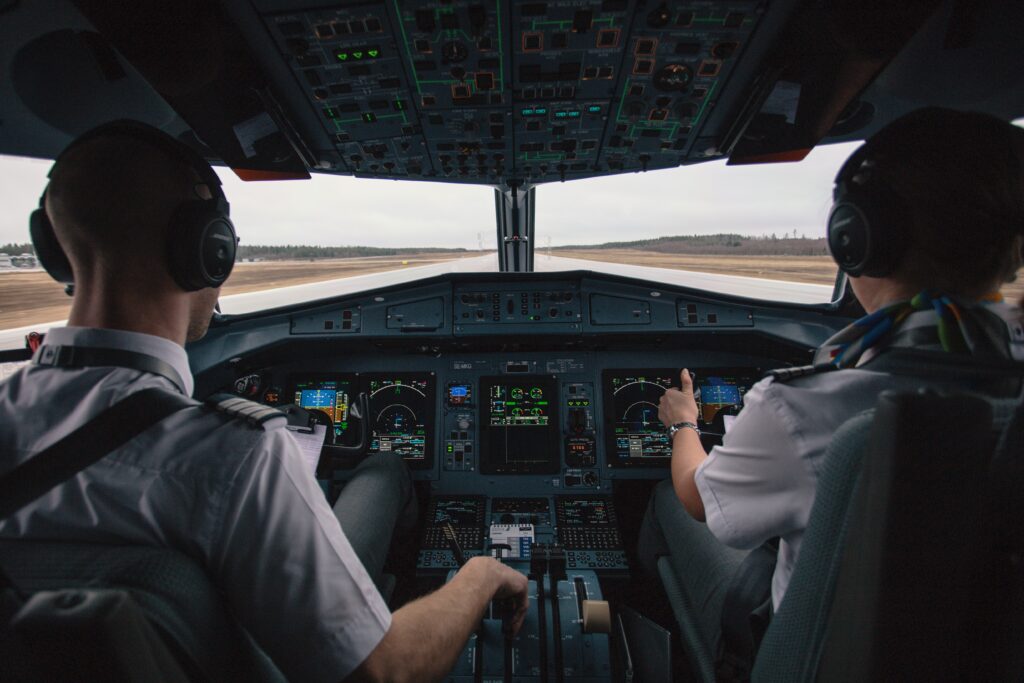Flight number callsigns
In conjunction with the International Civil Aviation Organisation (ICAO), Airservices Australia manages the allocation of Flight Number Callsigns (FNCs) for Australian registered aircraft operating agencies.
An FNC collectively refers to:
- the two (2LD) or three (3LD) letter designator used for aeronautical telecommunication services, flight plans and air traffic control displays; and
- the telephony designator primarily used for communication between pilots and air traffic controllers.
The risk of pilots and air traffic controllers confusing aircraft callsigns needs to be continually managed. The use of an aircraft’s three-letter registration as its telephony designator is usually the most effective means of managing this risk and is therefore still preferred unless there are compelling safety reasons to issue aircraft operating agencies their own unique FNC designators.

For example, if an operator has multiple aircraft with similar registrations (e.g. ABA, ABB, ABC, etc.), unique FNC designators may reduce the risk of callsign confusion. However, having multiple aircraft from the same operator using the same FNC designators may also create a callsign confusion risk when operators use similar numerical or alpha-numerical suffixes. Using dedicated FNC designators therefore requires active management by operators to reduce or remove this risk.
Proposals for FNC designators may also not be appropriate if they are too similar to existing geographical locations, commonly used air traffic control terms and phrases, or existing FNC designators.
For these reasons, the use of FNC designators remains at the sole discretion of Airservices Australia and will only be approved where their use will benefit the air traffic services system.
Callsigns - Special Task Operations
Callsigns for Special Task Operations are available for all operators provided they are used in accordance with AIP GEN 3.4, 5.21 Callsigns – Special Task Operations. Should you wish to use an existing special task callsign, or to create a new one, contact Airservices Australia using the details below.
International Air Transport Association (IATA) Airline Codes
IATA Airline Codes are, as the name suggests, issued and managed by the International Air Transport Association (IATA). They are used by operators for reservations, ticketing, cargo documentation, legal, traffic and other commercial purposes.
FNC designators managed by ICAO and Airservices Australia are only used for the provision of air traffic services and, as such, the public has little or no visibility of them. Usually the IATA Airline Code and the FNC designator are different.
Rules and guidance governing the selection of FNCs and suffixes
2LDs, 3LDs and the associated telephony designators are assessed in accordance with the ‘Rules for the Registration of or Change in Designators’ detailed in ICAO Doc 8585 (Designators for Aircraft Operating Agencies, Aeronautical Authorities and Services).
There are also a number of considerations when selecting suffixes to use with designators.
Rules and guidance for the selection of designators and suffixes can be found here.
Approval process
The approval process differs depending on whether an operator is applying for a 2 or 3 letter designator.
2LD and associated telephony designator
2LDs are used for domestic flights only and are assessed and approved by Airservices Australia. There is no charge for these applications.
3LD and associated telephony designator
3LDs are used for domestic and/or international flights and are approved by ICAO after assessment and agreement by Airservices Australia. As the number of global FNC designators are finite, 3LDs will only be approved for operators with significant international operations. The application carries a $4000USD charge (as of June 2023) regardless of the outcome.
Applications for a 3LD are made directly with ICAO, however, as ICAO require agreement from Airservices Australia, and to avoid unnecessary cost, it is strongly advised to submit the application form below to Airservices before making the application to ICAO.
Indicative Time Frame
Approving an FNC involves changing the way pilots, air traffic controllers, operators and all the associated systems, communicate with each other. As such, it takes significant lead time to make appropriate safety assessments, documentation and system changes. The following lead times assume a relatively straight forward application and are cumulative, i.e. the total time from application to first use may be up to 29 weeks, or longer if the callsign encounters additional issues that must be addressed:
| Milestone | Expected time period for each Milestone |
| Response to initial application | 2 weeks |
| FNC Assessment | 4 weeks |
| Stakeholder consultation and endorsement | 10 weeks |
| Implementation (Airservices 2LD) | Up to 10 weeks |
| Implementation (ICAO 3LD) | Up to 13 weeks |
FNC designators no longer in use
When FNC designators are no longer in use, operators must notify Airservices Australia in writing so they can be cancelled. There is no charge to cancel FNC designators.
Applications and correspondence:
To make an application, complete the Flight Number Callsign (FNC) Designators – Application and email to atsintegrity@airservicesaustralia.com.
For more information, contact:
ATS Integrity
ATM Standards, Airservices Australia
GPO Box 367, CANBERRA ACT 2601